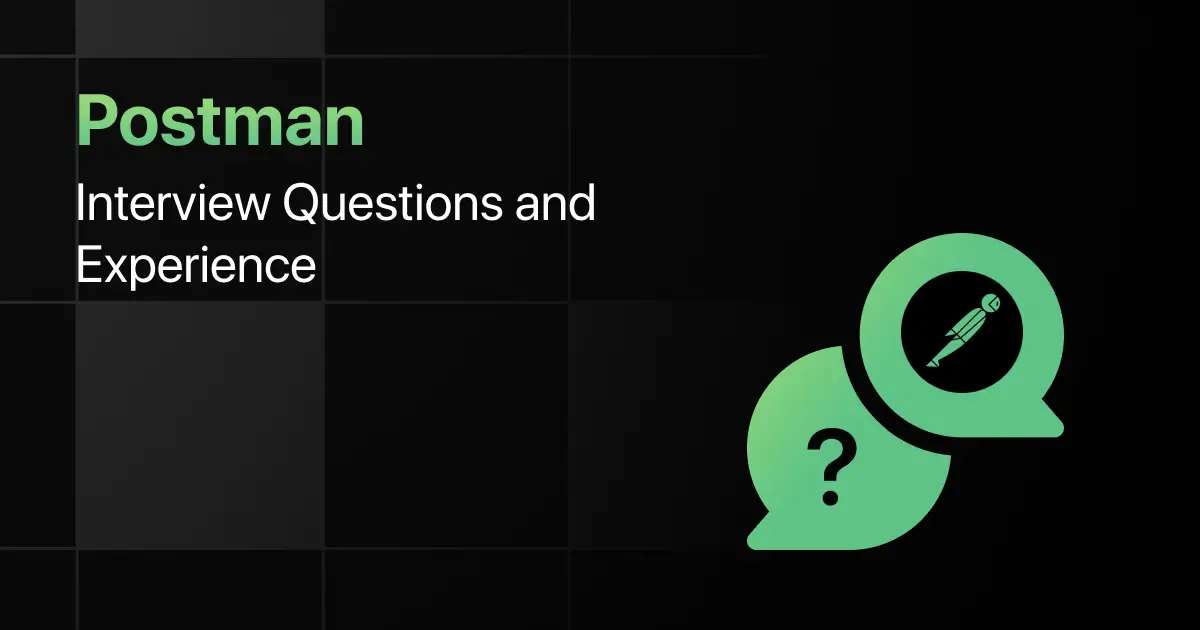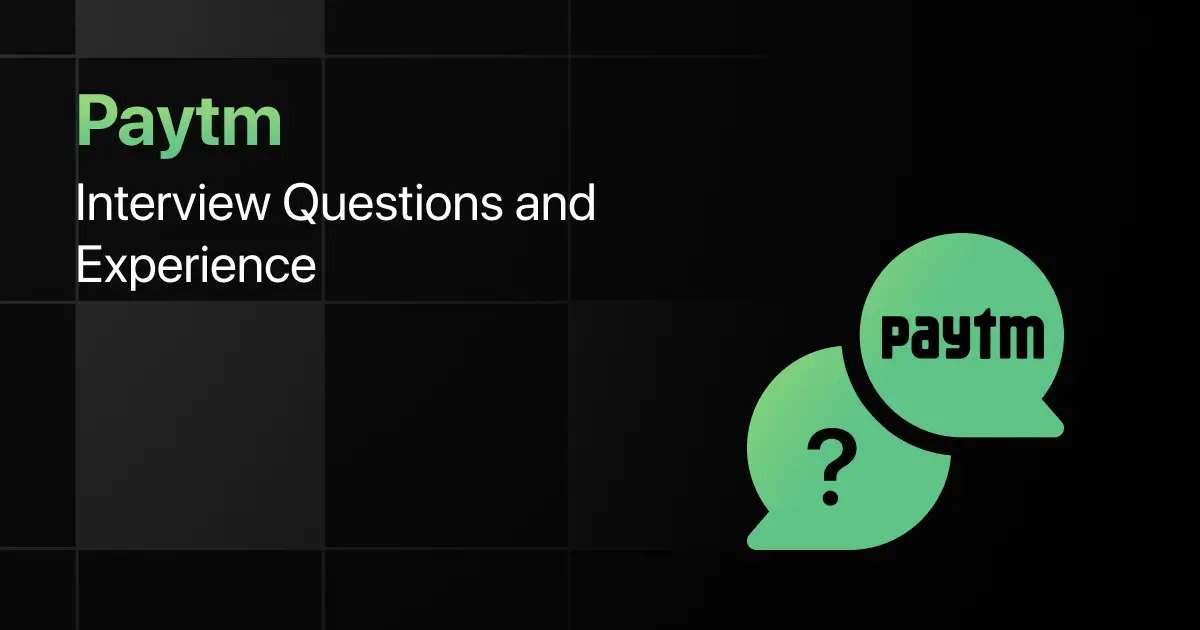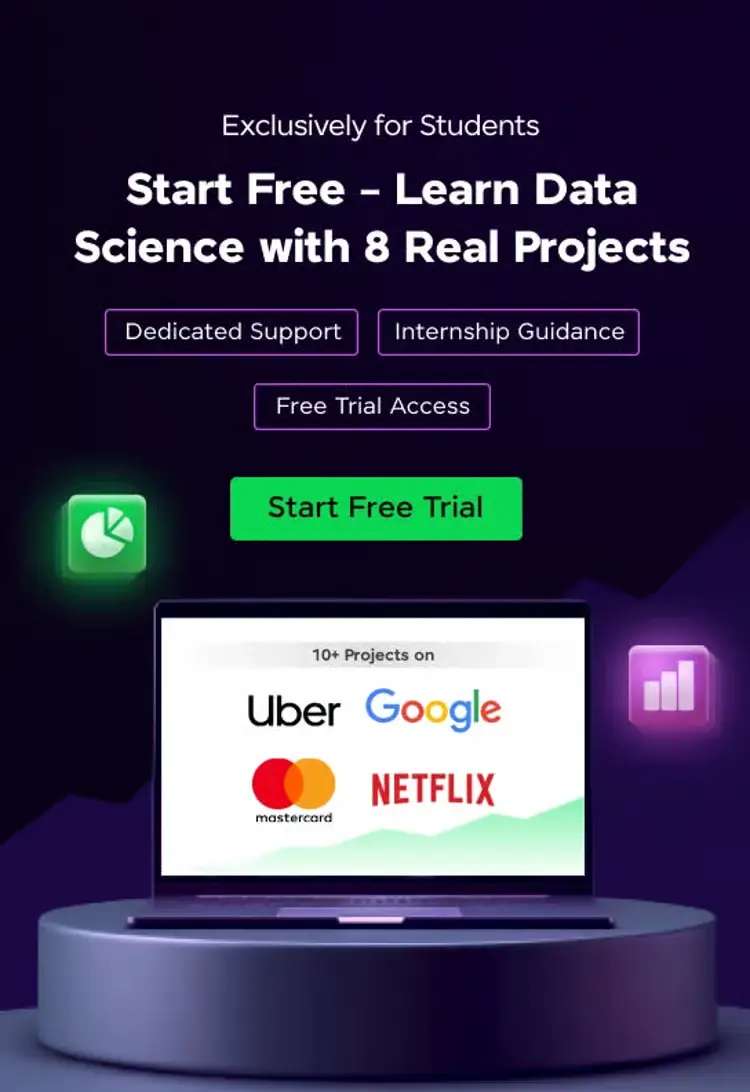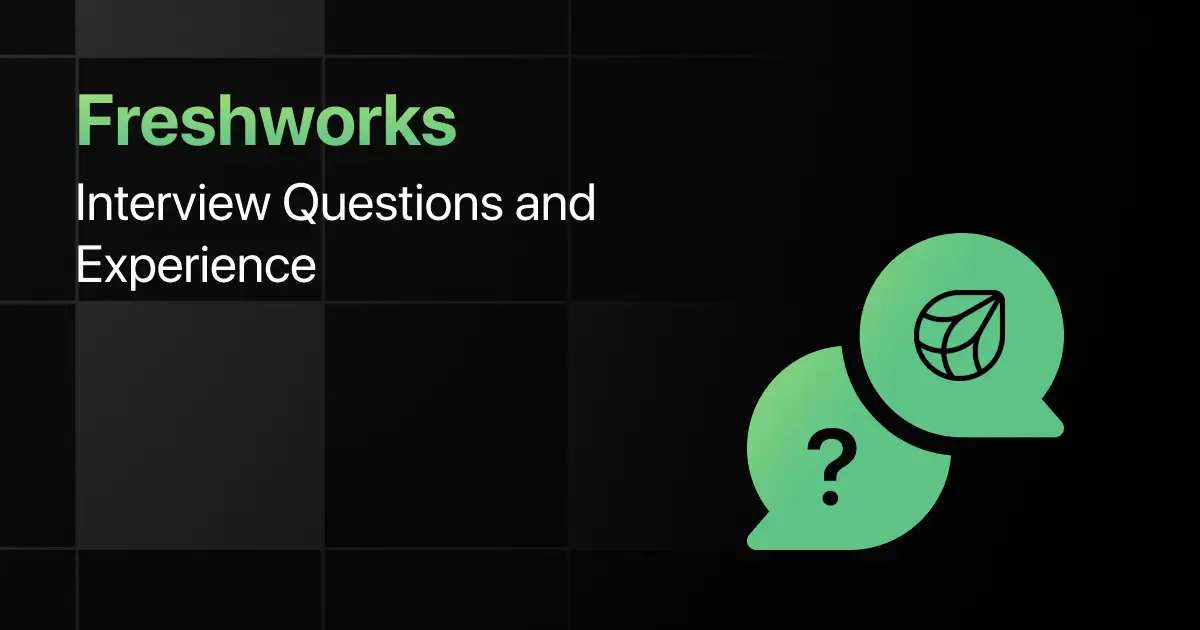Postman Interview Questions and Experience

Have you ever wondered what it takes to land a job at Postman, one of the most popular API development platforms in the world? With its reputation for innovation and global impact, Postman attracts thousands of aspiring candidates every year.
Whether you’re a fresher looking to start your career or an experienced professional aiming for advanced roles, preparing for a Postman interview can feel challenging yet exciting.
In this blog, we’ll walk you through the Postman hiring process, top interview questions, preparation tips, and real interview experiences to help you succeed.
Postman Hiring Process – Overview
Here’s a quick overview of Postman’s hiring process:
| Category | Details |
|---|---|
| Eligibility | Open to both freshers and experienced candidates; Computer Science, IT, or related technical degrees preferred. |
| Rounds | Typically 3–5 rounds: Online Assessment, Technical Interviews (1–2), System Design/Problem-Solving, and HR/Behavioral round. |
| Job Roles Offered | Software Development Engineer (SDE), Quality Engineer, Product Engineer, and Internship roles for students. |
| Salary Range | Fresher: ₹12–18 LPA; Experienced: ₹25–50 LPA (depending on role and experience level). Source: AmbitionBox & Glassdoor. |
| Apply Link | Apply Now |
Top Postman Interview Questions with Answers
Preparing for Postman interviews requires a mix of strong technical fundamentals, role-specific expertise, and the ability to communicate effectively. Below are the most commonly asked interview questions with sample answers.
1. Technical Questions
- What is an API, and why is it important?
An API enables software communication by exposing services or data. It ensures interoperability, faster development, and easier system integrations. - Explain the difference between REST and SOAP APIs.
REST is lightweight, flexible, and uses HTTP methods, while SOAP is more rigid, XML-based, and designed for strict enterprise-level communication. - What are HTTP status codes, and why are they used?
HTTP status codes communicate request outcomes, such as success (200), client error (400), or server error (500), improving debugging and communication. - What is the difference between PUT and POST methods in REST APIs?
POST creates new resources, while PUT updates existing resources or creates them if they do not exist, ensuring idempotent operations. - How do you handle API authentication and authorization?
Authentication verifies identity using credentials or tokens, while authorization checks user permissions. Common methods include OAuth, API keys, and JWT tokens. - What is rate limiting in APIs, and why is it important?
Rate limiting restricts the number of requests per client to prevent abuse, protect server performance, and ensure fair resource usage. - How do you test APIs using Postman?
In Postman, APIs are tested by sending requests, verifying responses, validating status codes, and writing automated tests with JavaScript snippets. - What is API versioning, and why is it needed?
API versioning allows changes without breaking existing clients, ensuring backward compatibility and smooth adoption of new features or improvements. - Explain the concept of idempotent API requests.
Idempotent requests return the same result no matter how many times they are repeated, ensuring stability and predictability in operations. - What are environment variables in Postman?
Environment variables in Postman store reusable values like base URLs, tokens, or parameters, enabling flexible, scalable, and efficient testing workflows. - How can you automate testing in Postman?
Automation is done using Postman’s Collection Runner or Newman CLI, combined with JavaScript test scripts for validation and continuous integration. - What is CORS in APIs?
CORS (Cross-Origin Resource Sharing) is a security mechanism controlling resource sharing between domains to prevent malicious cross-site access.
2. Role-Based Questions
Fresher
- Why do you want to join Postman as a fresher?
I want to apply my programming and problem-solving skills in a real-world environment, while learning and growing within a fast-paced company. - What projects have you done related to APIs?
I developed a project where I integrated REST APIs for data exchange, implemented authentication, and documented the process for future scalability. - How do you debug API errors in Postman?
I check request payloads, headers, and environment variables, validate API endpoints, and use console logs to analyze and resolve issues quickly. - What is the difference between a collection and an environment in Postman?
A collection organizes API requests, while an environment stores variables. Together, they simplify testing across multiple systems or configurations.
API Analyst
- How do you ensure API data quality?
By validating responses against schemas, checking for completeness, and applying assertions in Postman tests to ensure accuracy and consistency. - What is your approach to analyzing API performance?
I monitor latency, throughput, and error rates, using tools like Postman monitors or third-party analytics for detailed performance insights. - How do you handle inconsistent API documentation?
I cross-verify API behavior using Postman, collaborate with developers for clarification, and suggest updates to maintain accurate documentation. - Why is API monitoring important for businesses?
API monitoring ensures uptime, detects failures early, maintains service reliability, and provides insights into performance bottlenecks affecting end-users.
Developer
- What steps do you follow when designing a new API?
I gather requirements, define endpoints, select protocols, apply RESTful principles, add authentication, and document thoroughly for easy usage. - What is your experience with Postman scripts?
I use Postman scripts for data-driven testing, chaining requests, validating responses, and automating workflows during integration testing. - How do you design APIs for scalability?
I use stateless architectures, proper versioning, caching, and efficient data models to ensure APIs scale with growing user demands. - Explain your experience with CI/CD and Postman.
I integrated Postman collections into CI/CD pipelines using Newman, ensuring automated regression testing and quicker feedback on API changes.
Manager
- How do you manage API testing teams effectively?
I assign clear responsibilities, enforce coding standards, encourage collaboration, and monitor progress with automated dashboards and reports. - How do you handle conflicts between developers and testers?
I encourage open communication, mediate discussions, and ensure both perspectives are valued while aligning with project goals. - What KPIs do you track for API success?
I track uptime, latency, error rates, adoption rates, and user satisfaction metrics to evaluate API effectiveness and business impact.
3. Behavioral Questions
- Tell me about a time you resolved a technical conflict in a team.
I listened to both sides, analyzed solutions objectively, and encouraged consensus, which resulted in a more efficient, collaborative approach. - How do you prioritize tasks under tight deadlines?
I break tasks into smaller milestones, rank them by urgency, and allocate time efficiently while communicating progress transparently. - Describe a time you learned a new technology quickly.
I once had to master Postman automation within days. I followed tutorials, experimented with scripts, and successfully implemented solutions. - How do you handle feedback from peers or managers?
I take feedback positively, reflect on improvement areas, and implement actionable changes to continuously enhance my performance. - What motivates you to work at Postman?
I admire Postman’s impact on API development and its culture of innovation, which aligns with my personal career aspirations. - How do you handle communication with cross-functional teams?
I use clear, concise communication, share progress updates regularly, and actively listen to ensure smooth collaboration with non-technical stakeholders. - Tell me about a time you failed in a project and what you learned.
I once missed an API edge case, which caused delays. I learned to test thoroughly and document scenarios more comprehensively. - How do you manage stress before presentations?
I prepare in advance, practice frequently, and use deep-breathing exercises to stay calm and confident during stressful situations.
Postman Interview Experiences
1. Software Engineer Intern Interview Experience (Fresher)
Here is the interview experience of Nishant Garg, who joined Postman as a Software Engineer Intern through an off-campus opportunity.
Candidate Background (Fresher, skills, education):
Tier-3 college student with project experience in React and backend development. Applied off-campus and participated in a five-round selection process.
Interview Process They Faced (how many rounds, what type)
- Round 1: HackerEarth coding test with 17 MCQs (DBMS, OOPs, Networking) and 3 coding problems.
- Round 2: Technical Interview 1 (JavaScript, React states/props, lifecycle methods, OS, DBMS, networking, resume projects).
- Round 3: Technical Interview 2 (system design discussion of a Twitter-like app, DB models, low-level design).
- Round 4: Managerial round (projects + team-related discussions).
- Round 5: HR round (offer confirmation and compensation discussion).
Questions Asked (statistical, ML, coding, case studies)
- React states, props, lifecycle methods.
- JavaScript concepts: event delegation, event bubbling.
- System design for a forum-like app (users, posts, DB schema).
- Project-specific deep-dive implementation questions.
- MCQs on OS, networking, DBMS.
Outcome & Difficulty Level (cleared/not, feedback):
Selected for a 6-month Software Engineer Internship. Difficulty: moderate — strong resume knowledge, React/JS expertise, and project clarity were crucial.
2. SE1/SE2 Interview Experience (Experienced)
Here is the interview experience of a candidate who interviewed for SE2/SE1 roles at Postman in Bangalore.
Candidate Background (Experienced, skills, education):
- Applied earlier but wasn’t shortlisted; later reached out again by a recruiter. Experienced engineer with backend, design, and Python skills.
- Interview Process They Faced (how many rounds, what type)
- Round 1: Design round — project discussions and technical Q&A.
- Round 2: Design + coding — clone PickleDB in Python, discuss improvements (SRP, concurrency, race conditions, ACID, TTL).
- Round 3: Bar raiser — low-level design of “Undo Delete Collections” with scaling and TTL considerations.
- Round 4: Hiring Manager round — cultural fit, motivation to join, and career goals.
Questions Asked (statistical, ML, coding, case studies)
- Code reading and functionality analysis of PickleDB.
- Design improvements: breaking classes into smaller ones (SRP).
- Low-level design of “Undo Delete” feature in Postman with scaling follow-ups.
- Cultural and HR-style behavioral questions.
Outcome & Difficulty Level (cleared/not, feedback):
Selected for SE1 role (downgraded from SE2). Difficulty: high — strong design, Python coding, and scaling knowledge tested. Feedback: solid skills, but the SE2 bar wasn’t fully met.
Preparation Tips for Postman Interviews
Postman interviews focus on API fundamentals, problem-solving, and communication skills. Preparing strategically can help you perform confidently across technical and behavioral rounds.
- Revise API Basics: Strengthen your knowledge of REST, SOAP, HTTP methods, authentication, and status codes, as these are core areas tested in interviews.
- Hands-on Practice: Use Postman extensively to create collections, test APIs, manage environments, and automate workflows. Practical usage matters more than theoretical knowledge.
- Focus on Documentation: Be prepared to explain how you’d write or improve API documentation. Clarity and completeness are key evaluation criteria at Postman.
- Work on System Design: Review API design patterns, scalability concepts, and microservices basics. Interviewers may test how you design APIs for high availability.
- Prepare Behavioral Stories: Have clear STAR-format stories ready about teamwork, conflicts, deadlines, and adaptability, since cultural fit is highly valued.
- Stay Updated: Postman often works with modern tools. Stay aware of trends in API testing, CI/CD integration, and automation frameworks.
Final Words
Cracking Postman interviews requires a balance of technical expertise, practical API testing skills, and communication abilities. With consistent practice and preparation, you can stand out as a strong candidate.
Explore More for
- Amazon
- Salesforce
- Oracle
- Microsoft
- IBM
- Adobe
- Flipkart
- Apple
- Uber
- Meesho
- Zomato
- Swiggy
- Phonepe
- Zoho
- Freshworks
- Paytm
- Darwinbox
FAQs
Common questions include API fundamentals, HTTP methods, status codes, REST vs SOAP, API testing, system design, and scenario-based problem-solving.
Postman interviews for freshers are moderately tough, focusing on core API concepts, SQL, problem-solving, and communication skills rather than advanced system design.
The process typically takes 2–4 weeks, depending on the role, with online assessments, technical interviews, and managerial or HR discussions.
Candidates should focus on APIs, SQL, REST, HTTP methods, Postman tool usage, system design basics, and debugging real-world API scenarios.
Candidates often overlook API fundamentals, fail to explain design decisions, skip edge cases, or neglect communication and documentation skills during discussions.
Postman interviews usually include 3–5 rounds: online assessment, API/technical rounds, system design or coding, managerial discussion, and HR round.
Yes, freshers face more conceptual and basic problem-solving questions, while experienced candidates are tested on system design, scalability, and real-world API challenges.
The best way is to practice API testing, system design, and behavioral skills. Use PlacementPreparation.io for structured resources and mock interview practice.
Related Posts


Paytm Interview Questions and Experience
Preparing for a Paytm interview requires a clear understanding of the company’s hiring process, the type of questions asked, and …
Warning: Undefined variable $post_id in /var/www/wordpress/wp-content/themes/placementpreparation/template-parts/popup-zenlite.php on line 1050








